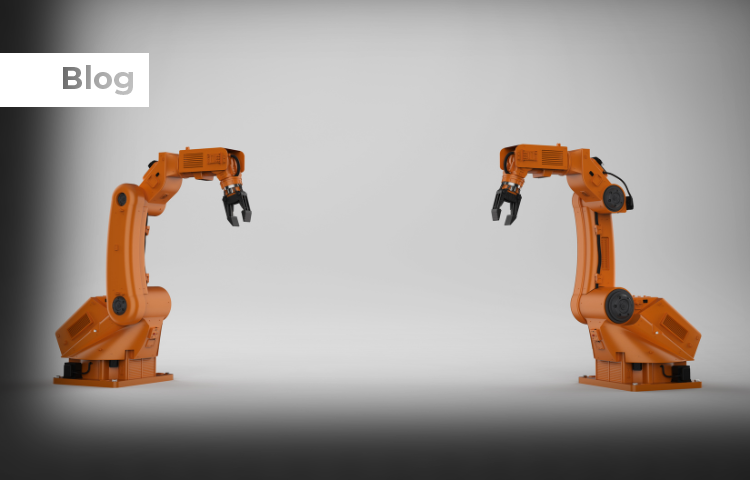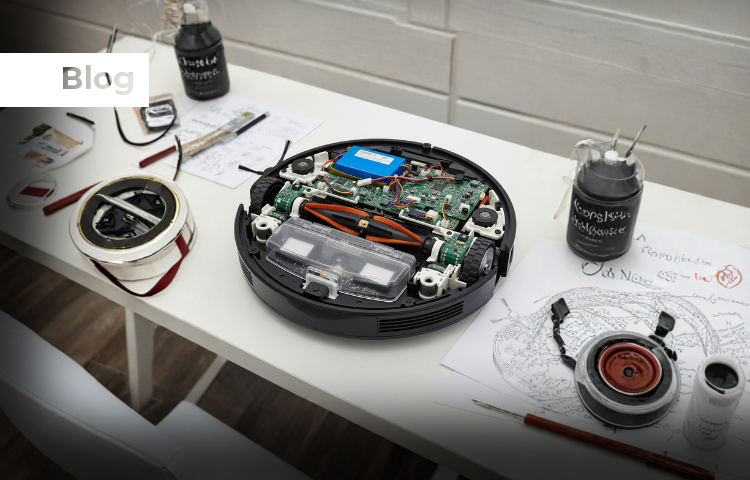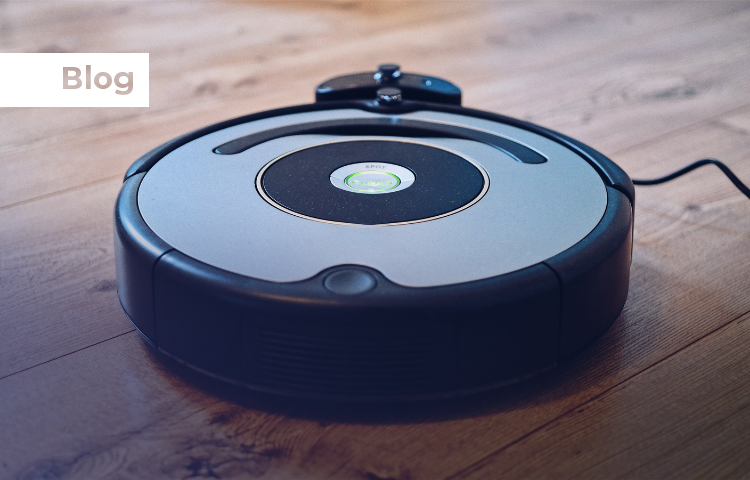Choosing the Right Hall Effect IC: Key Factors and Applications
Hall effect sensors are solid-state transducers that output a voltage proportional to a magnetic field. Modern Hall effect ICs integrate a Hall element, bias/regulator, amplifier, and often output circuitry in one chip. In a Hall sensor, a fixed DC current flows through a thin semiconductor plate, and a perpendicular magnetic field produces a transverse “Hall” voltage. This output is typically ratiometric (e.g. VCC/2 at zero field) and scales with field strength monolithicpower.com. The result is a contactless, dirt-immune sensor of magnetic fields: hundreds of millions of Hall ICs are sold each year for industrial and consumer use.
How Hall Effect Sensors Work
Hall ICs come in two main types. Linear (Analog) sensors provide a continuous voltage proportional to the field, ideal for measuring varying field strength or current. For example, TI’s DRV5055 analog Hall sensor outputs roughly 100 mV/mT (≈10 mV/G) at 5 V supply. Such devices are ratiometric: no-field bias is mid-supply, and the slope (sensitivity) is specified in mV/gaus. Because the raw Hall voltage is small, the IC includes a built-in amplifier (often chopper-stabilized for low offset). The analog output may require filtering or an ADC for precise readings.
Analog (Linear) Output: Ratiometric voltage (≈VCC/2 at B=0) that shifts up or down with magnetic field. Use when you need proportional position or current measurements. The slope (sensitivity) ranges from a few mV/G up, depending on the device and supply.
Digital (Switch) Output: On-chip comparators (Schmitt triggers) turn the output fully on or off when the field crosses set threshold. These are used as electronic switches. They typically provide an open-collector (or open-drain) output requiring a pull-up resistor. When the sensed field is above the operate point, the device drives low (or high, depending on type); when below the release point, it toggles back. Most digital Hall ICs include built-in hysteresis and Schmitt-filtering to avoid chatter.
Because Hall elements measure only the axial component of magnetic flux density, orientation matters. In practice, the sensor’s face is aligned so that the magnet (or ferrous target) moves along the sensitive axis. Many ICs include internal regulators and reverse-battery diodes so they can run from wide supplies (e.g. 4.5–24 V).
Common Applications of Hall Effect Sensors
Hall sensors are prized for robust, noncontact sensing. They work reliably in dirty or wet environments and are immune to dust and mud, unlike optics or mechanical switches.
Typical applications include:
Current Sensing: Hall sensors can measure DC or AC current by detecting the magnetic field around a conductor. For example, Allegro’s ACS712/ACS723 series contain a built-in Hall element wrapped by a copper bus, allowing precise, isolated sensing of ±5–30 A. (These devices output an analog voltage proportional to current, e.g. ~185 mV/A for the 5 A version) Because no shunt is needed, they introduce negligible series resistance. Hall-based current ICs are widely used in power supplies, battery monitors, motor drivers, etc.
Position/Proximity Sensing: Hall switches detect the presence or position of a magnet or ferrous target. A common example is mounting a Hall IC next to a piston or gear. As the magnet moves past, the sensor toggles on and off. For instance, Hall ICs on a pneumatic cylinder can tell when the piston is extended or retracted (see figure below). Hall sensors are also used for gear-shift levers, limit switches, or floating fuel-level magnets. Because they have no contacts, they outlast mechanical cams or potentiometers and avoid wear.

Figure: Hall-effect sensors (blue) mounted on a pneumatic cylinder detect piston position. Hall sensors are immune to dust and dirt, making them well-suited for rugged position sensing
Speed and Motion Detection: A Hall IC can time passing magnets or teeth on a wheel/shaft. For example, a rotating wheel with two embedded magnets causes a Hall sensor to produce two pulses per revolution. This principle is used in tachometers, anti-lock brake wheel sensors, brushless DC motor commutation, and flow meters. Hall sensors can operate at high RPM (up to hundreds of kHz bandwidth) with very long lifetime, unlike mechanical pickups. In fact, Hall devices are commonplace in disk-drive spindles, printers, and industrial encoders.
Other Uses: Because Hall sensors respond to a magnetic field regardless of polarity, they serve in proximity and security (e.g. magnetically-actuated switches), cover detection (smartphone cover magnets), brushless motor rotor position, current transformers, and even electronic compasses (with multiple axes). Any application that needs a contactless, solid-state sensor may use Hall technology.
In summary, Hall effect ICs are integral in automotive (wheel speed, crank/fuel level), industrial controls (position, current, proximity), and consumer electronics (phone covers, printers). Their ability to produce a clean digital signal or a proportional analog voltage makes them versatile building blocks for sensing designs.
Key Factors in Hall Effect IC Selection
When selecting a Hall sensor IC, compare its specifications to your system’s requirements. Key factors include:
Output Type (Analog vs Digital): Decide if you need a proportional output or just a switch. Use an analog Hall IC if you need a voltage proportional to field (for example, measuring an angle or current). These devices often specify sensitivity (mV/G or mV/mT) and full-scale range. Use a digital (switch) Hall IC if you only need to detect a threshold (on/off). Digital sensors output a clean logic signal when the field exceeds the operate pointmonolithicpower.com. Keep in mind digital outputs are usually open-collector/drain transistors, so you must provide a pull-up resistor to your system voltage.
Switching Polarity: Hall switches are further classified by how they respond to magnetic polarity. Unipolar switches trigger only on one pole (usually the south pole as defined in the datasheet). Omnipolar (sometimes called bipolar latching) switches trigger on either north or south pole – a magnet of either orientation will turn them on. Bipolar (or latching) switches have separate thresholds for north vs. south fields and usually require the field to reverse polarity before resetting. For example, a unipolar A3144 turns on only with a south field, whereas an omnipolar device like Allegro’s A1104 will turn on with either pole. Choose according to your magnet/target: unipolar if you will only present one pole, or omnipolar if you need flexibility in magnet orientation. (Bipolar/latch types can avoid chatter in reversing fields but need a reverse field to reset.)
Sensitivity and Range: Check the sensor’s sensitivity and full-scale field. A high-sensitivity Hall IC (many mV/G) can detect small fields or operate with a larger air gap, but it may saturate if the magnet is too strong. A low-sensitivity device requires a stronger magnet or closer placement. For example, TI’s DRV5055A1 has ~100 mV/mT sensitivity at 5 V (2 mT → 0.2 V change). In current sensors, sensitivity is given in mV/A (the ACS712’s ranges are ~185 mV/A for ±5A down to 66 mV/A for ±30A). Ensure the specified operate point (B<sub>OP</sub>) and release point match your magnet’s strength and required air gap. Also note the sensor’s linear range; many analog Hall ICs saturate near the rails (e.g. output stays within ~0.2 V of ground or VCC as limits).
Temperature Range and Stability: Choose an IC rated for your environment. Industrial sensors typically cover –40°C to +85°C, while automotive-grade parts go to +150°Celecrow.com. If your system sees wide temperature swings, look for features like chopper stabilization or temperature compensation, which minimize offset drift. Many Hall ICs advertise “stable output” over temperature. For example, some Allegro devices specify 0.1%/°C offset drift using chopper-stabilized amplifiers.
Supply Voltage and Interface: Ensure the IC can run from your power rails. Many Hall ICs include an internal regulator to allow wide supply (e.g. 4.5–24 V for the A314x series) so you can feed them directly from automotive or industrial supplies. Check current consumption – most Hall ICs draw only a few milliamps. Note the interface: analog outputs are often rail-to-rail but must be buffered or filtered, while digital outputs may be open-drain. If using digital sensors, select pull-ups and logic levels appropriate to your system. Also consider output format: some specialized Hall ICs offer PWM outputs (duty-cycle vs. field) or even digital communications (e.g. I²C, SPI) for advanced applications.
Packaging and Mounting: Choose a package and mounting style that fits your assembly. Hall ICs come in tiny SOT-23 or SOT89 packages for PCB mounting, as well as larger formats (SOIC, SIP/through-hole) for easy prototyping. Through-hole “Hall switch” modules (e.g. spring or puck sensors) often embed a magnet and are used for PC cases or simple on/off sensing. The package affects the active area depth – the effective air gap between magnet and Hall element. Allegro defines total effective air gap (TEAG) to include package depth. In practice, keep the magnet as close as practical to the sensor face. Finally, consider pinout and mounting orientation: many Hall ICs have a marked face that should point toward the magnet.
Popular Hall Effect IC Examples
Below are a few well-known Hall ICs to illustrate options:
- Allegro ACS70310/70311 and ACS37610 (Current Sensors): These are high-precision Hall-effect current sensors with analog ratiometric outputs, designed for different high-current sensing approaches. The ACS70310/70311 are intended for use with ferromagnetic cores, offering programmable sensitivity from 0.5 to 11.5 mV/G in a slim 4-pin SIP package. They feature ultralow drift (±1% sensitivity, ±5 mV offset), wide bandwidth (DC to 240 kHz), and fast 2 µs response, with built-in reverse battery protection and diagnostics like broken ground detection and output clamps. The ACS37610 is a coreless sensor for PCB or busbar-based high-current applications (100 A to >4000 A), using a differential Hall topology that rejects stray fields without the need for a concentrator core or shield. It comes in an 8-pin TSSOP package with sensitivity options from 3 to 28 mV/G, and supports DC–250 kHz operation, <2 µs response time, and programmable overcurrent/temperature fault detection. Both families are automotive-grade and ideal for inverters, DC–DC converters, battery monitoring, and smart power systems.
Allegro ACS712/ACS723 (Current Sensors): These are fully integrated 5–30 A current sensors in an SOIC-8 package. They include a low-offset Hall element and copper conductor. The output is analog and ratiometric, with sensitivity of 185 mV/A (5 A version), 100 mV/A (20 A), or 66 mV/A (30 A). They have a FILTER pin for optional noise suppression (e.g. 1 nF). ACS712/723 devices are widely used in motor drives, power supplies, and battery monitors.
- Allegro CT815x (TMR Magnetic Sensors): The CT815x series are ultra-low-power analog (and optionally digital) tunnel magnetoresistance (TMR) sensors housed in compact 3-lead SOT-23, 4-lead LGA, or 5-lead SOT-23 packages. Using Allegro’s XtremeSense™ TMR technology, these omnipolar sensors provide a sample-and-hold analog output with 5 mV/V/G sensitivity over a ±80 G range and consume just ~1.3 µA (analog) or ~150 nA (digital-only) at 1.8V. The CT8152 variant features both analog and digital outputs with automatic wake-up functionality. With supply voltages from 1.7 V to 5.5 V, built-in undervoltage lockout (UVLO), and push-pull digital output, these sensors are optimized for battery-powered and space-constrained applications such as smartphones, IoT devices, motor controllers, smart meters, and medical equipment.
- Allegro CT811x/CT812x/CT813x (TMR Magnetic Switches): These are ultra-low-power tunnel magnetoresistance (TMR) digital magnetic switches designed for space-constrained, battery-powered applications. Based on Allegro’s XtremeSense™ TMR technology, they feature digital CMOS outputs (push-pull or open-drain) and operate over a wide 1.7–5.5 V supply range. The CT811x series are unipolar switches with sensitivity down to 15 G and consume as little as 145 nA, while the CT812x series are bipolar latches supporting magnetic thresholds as low as ±10 G and current consumption around 2.4 µA. The CT813x series are omnipolar switches with selectable sensitivities from ±9 G to ±70 G and industry-leading quiescent currents as low as 110 nA. All are available in compact SOT-23 and LGA packages with optional sampling frequencies up to several kHz. Integrated features include undervoltage lockout (UVLO), high ESD protection, and robust switching behavior across temperature, making them ideal for applications such as lid or door detection, reed switch replacement, fluid level sensing, motor control, tamper detection in smart meters, and medical or IoT devices.
TI DRV5055/DRV5056 (Bipolar/Unipolar Analog): TI offers linear Hall sensors with sensitivity variants. The DRV5055 (bipolar) responds to either pole (can tell N vs S by output polarity), while the DRV5056 (unipolar) responds only to one polarity for higher sensitivity. At 5 V, DRV5055A1 has ~100 mV/mT sensitivity. These are provided to illustrate that even analog sensors may be classified by polarity handling.
- Multi-axis and Specialty ICs: For advanced designs, 3D Hall sensors like Melexis’s MLX90393 (three-axis, SPI output) or Infineon’s TLE4935 (3D, analog output) allow detection of full vector fields (e.g. for 3D position or current). Some Hall ICs even integrate multiplication or differential sensing for current transformer applications. Additionally, Hall-based rotary position sensors (COT sensors like Allegro’s UGN series or Melexis’s ratiometric angle sensors) exist for exact angle measurements.
No single IC fits all uses, so pick one whose output type, sensitivity, and polarity behavior match your magnet and application. For current sensing, devices like the ACS712/723 or Allegro’s core-based sensors are typically the best choice due to their accuracy and isolation. For position, linear sensors (A130x series or TI DRV series) can give a smooth output, while simple switches (A3144, SS495) can serve as limit switches. High-speed or high-temperature needs may favor automotive-grade parts (e.g. Infineon TLE, Melexis MLX, or Allegro’s wide-temp versions).
Integration Tips for Engineers
To get reliable performance from a Hall sensor IC, follow these guidelines:
Magnet and Alignment: Mount the sensor so its active face is close to the moving magnet or target. Align the sensitive axis correctly (radial for rotating magnets, etc.). Keep the air gap small and consistent. Allegro defines the total effective air gap (TEAG) to include package depth, so minimize this distance. For unipolar switches, ensure the magnet’s correct pole (usually the south pole) faces the sensor. Use a stable, rigid mount for magnets to avoid vibration-induced noise. If using a ferrous vane or gear, position it so the magnetic field is strong at the switch point.
Power and Decoupling: Always place a bypass capacitor (0.01–0.1 µF) close to the Hall IC’s VCC pin, even if it has an internal regulator. Many sensors are ratiometric, so tie their supply decoupling to the same reference as any ADC. For analog sensors, consider an RC filter on the output for noise reduction; the ACS712, for example, has a FILTER pin where a small capacitor (≈1 nF) can be added for this purpose.
Output Interface: If using a digital output, add a pull-up resistor to the logic rail as recommended (e.g. 4.7–10 kΩ). Confirm that the sensor’s output transistor can handle the pull-up current (open-collector outputs typically source few μA). For analog outputs, ensure your ADC input range matches the sensor swing. Some Hall ICs have rail-to-rail output but drop a few hundred millivolts near the rails, so avoid saturating the ADC.
Noise and Filtering: Hall signals can be sensitive to stray fields and noise. Use the IC’s built-in hysteresis/Schmitt trigger for digital outputs to reject vibration or ripple. For analog outputs, consider a low-pass filter or averaging in firmware. Differential sensor arrangements (two Hall elements opposing fields) can cancel common-mode fields if needed.
Thermal and Calibration: Characterize the sensor at your operating temperature extremes. If using a current sensor or analog sensor, calibrate out offset and gain errors (many ICs have a trim procedure). Some Hall ICs feature chopper-stabilization and are trimmed for low offset, but a small calibration may still be needed in precise applications. Avoid exposing the sensor to magnetic fields beyond its rated range (excess field can saturate the Hall element and distort output).
PCB Layout: Keep the Hall IC away from large ground loops or high currents, if possible, since stray fields can affect readings. Run ground and VCC traces with minimal loop area, and place the sensor on the PCB so that any conductor it’s sensing (in current sensors) or power planes do not induce unwanted fields.
By carefully matching the Hall IC’s characteristics (output type, sensitivity, polarity) to your application and following good layout/assembly practices, you can harness the precision and reliability of Hall sensing. This design guide should help you navigate the key trade-offs in Hall effect IC selection and integration.
- Hall effect sensor – Wikipedia: https://en.wikipedia.org/wiki/Hall_effect_sensor
- Hall Effect Sensors: A Comprehensive Guide | Article | MPS: http://www.monolithicpower.com/en/learning/resources/hall-effect-sensors-a-comprehensive-guide?srsltid=AfmBOoq1QoNIg2qMfaA0pYqzxt0Y8TvzcXVEXN-oh0Cm4O6nKUE75zTh
- Understanding and Applying Hall Effect Sensor Data Sheets (Rev. A) : https://www.ti.com/lit/pdf/slia086
- ACS712: Fully Integrated, Hall Effect-Based Linear Current Sensor IC with 2.1 kVRMS Isolation and a Low-Resistance Current Conductor: https://radiolux.com.ua/files/pdf/ACS712.pdf
- Hall Effect Sensors: A Comprehensive Guide | Article | MPS: http://www.monolithicpower.com/en/learning/resources/hall-effect-sensors-a-comprehensive-guide?srsltid=AfmBOoq1QoNIg2qMfaA0pYqzxt0Y8TvzcXVEXN-oh0Cm4O6nKUE75zTh
- 3141: https://www.elecrow.com/download/A3141-2-3-4-Datasheet.pdf?srsltid=AfmBOoqJmy7J31QmbmZROGck2-dI2KbXN5hwH7yVugHzLQLoP_EsN_MR
- Unipolar Hall-Effect Sensor IC Basics: https://www.allegromicro.com/en/insights-and-innovations/technical-documents/hall-effect-sensor-ic-publications/unipolar-hall-effect-sensor-ic-basics
- Reed Switch, Reed Sensor and Magnet Glossary: Hall Effect Sensor: https://www.reed-sensor.com/glossary/hall-effect-sensor/
- Omnipolar Switch Hall-Effect IC Basics | Allegro MicroSystems; https://www.allegromicro.com/en/insights-and-innovations/technical-documents/hall-effect-sensor-ic-publications/omnipolar-switch-hall-effect-ic-basics





